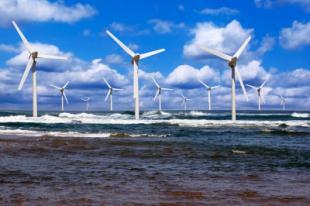Post date:
Staff from the School of Engineering contributed to a key report published by The Royal Academy of Engineering into the future of wind energy in the UK.
Professor Gareth Harrison was a member of the working group for Wind energy: implications of large-scale deployment on the GB electricity system.
The report assessed the potential for wind energy to contribute to meeting the government's targets of providing 15% of the UK's energy from renewable sources by 2020 and cutting 80% of greenhouse gas emissions by 2050.
Offering a balanced view of the often contentious debate around wind power, the working group found that wind power could be used to meet up to 20% of the country's electricity demands without significant impact on grid operation. Beyond this, managing the system will rely on interconnection, flexible generation, demand response and storage.
Professor Harrison authored the report’s section on carbon emissions along with postdoctoral researcher Dr Camilla Thomson. It concentrated on two main areas of interest: the carbon footprint of the wind turbines and associated infrastructure, and the emissions avoided or reduced elsewhere in the electricity system. It found that wind energy has a very low carbon footprint that is some 40 times lower than gas generation and 100 times lower than coal. Further and contrary to some commentators’ views the report finds that wind is very effective at avoiding emissions. Drawing heavily from Dr Thomson’s recent PhD analysis it found that ‘official’ government figures systematically underestimate reductions from wind and that despite efficiency penalties from part-loading generators it is almost as effective at reducing emissions as demand reduction.



